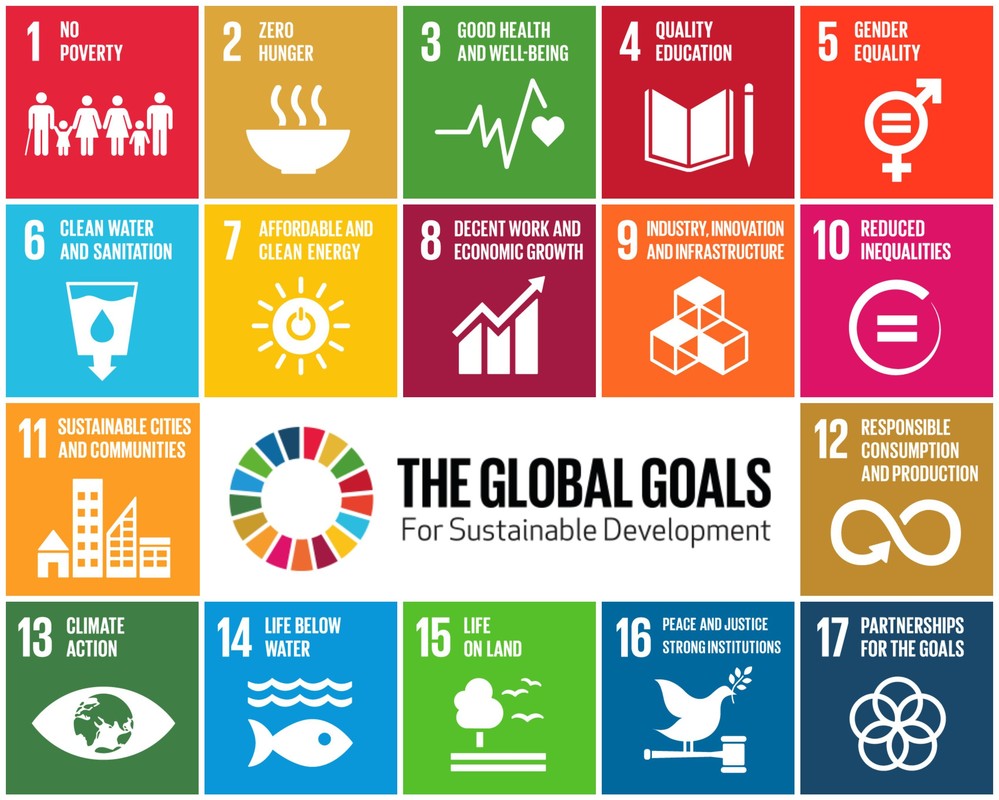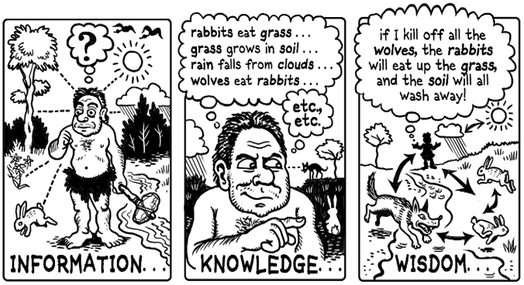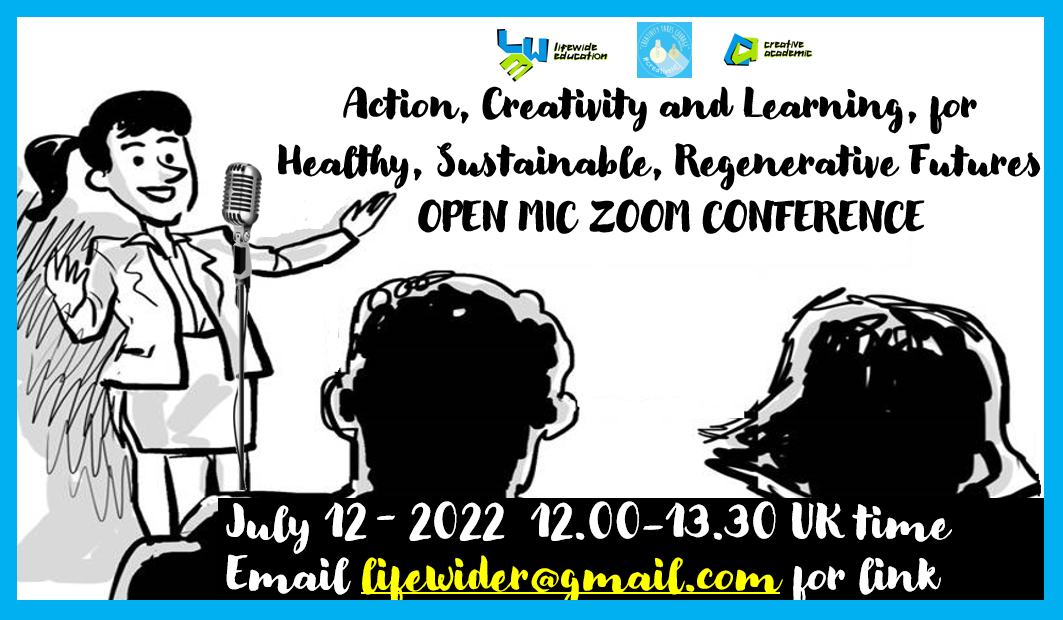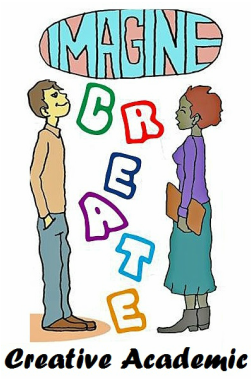The UN is the worlds global strategic planner and clearly the SDGs are designed for Governments, corporations and NGO's but the principles on which they are based must apply and be acted upon by the whole of humanity. Education (which has its own SDG #4) has a crucial role to play and this is where Creative Academic, with its network of educators and people interested in learning can participate.
While quite a lot of attention has been given to creative innovation for sustainability, relatively little attention has been paid to the important role of individuals’ imagination and creativity in contributing small-scale personal and community-based solutions to sustainable environments, cultures and futures. With so much at stake we need to ask ourselves, "is sustainability the new high stakes context and challenge for personal creativity?
| The 17 Sustainable Development Goals (SDGs) (1) No Poverty, (2) Zero Hunger, (3) Good Health and Well-being, (4) Quality Education, (5) Gender Equality, (6) Clean Water and Sanitation, (7) Affordable and Clean Energy, (8) Decent Work and Economic Growth, (9) Industry, Innovation and Infrastructure, (10) Reducing Inequality, (11) Sustainable Cities and Communities, (12) Responsible Consumption and Production, (13) Climate Action, (14) Life Below Water, (15) Life On Land, (16) Peace, Justice, and Strong Institutions, (17) Partnerships for the [Sustainable Development] Goals. |
To ‘sustain’ means to keep something going or provide support to enable something to flourish. Daniel Wahl has done much to explore the idea of sustainability he says that what we are trying to sustain through the SDGs is the underlying pattern of health, resilience and adaptability that maintains our planet in a condition where life as a whole can flourish. He believes that the central concern of sustainability is to nurture and design environments, conditions, cultures and behaviours for regeneration – in which living and non living things can be restored if they are damaged, and grow, develop and flourish(2).
Human creativity is itself generative – by imagining, combining and integrating ideas, and acting on these ideas we bring new ideas, things and ways of being into existence and create new value and meaning. Human creativity and inventiveness is at the heart of the idea of regenerative environments and cultures which can apply at all scales from what we do as individuals to influence the world around us to the way whole organisations, cities or societies behave. But there is also a downside to human creativity as it may lead to inventions, social behaviours and ways of being that have a detrimental impact on our environment.
As Tom Chalkley’s brilliant cartoon depicts, humans have always had to deal with sustainability issues in their environment and their existence depended on developing the ecologicl wisdom to survive: wisdom that became cultural knowledge within communities. Through their experience of the world and their experiments with it our hunter gatherer ancestors learned to recognise the relationships, connectivities and interdependencies of the living and non-living things in their environment and the consequences of their interventions on these relationships.
As Hans d’Orville, a sustainability advisor to the UN, explains we cannot hope to solve the multitude of sustainability problems without human imagination, creativity, ingenuity and resourcefulness. “The world must resort to the ultimate renewable resource: human ingenuity and creativity. Creativity is at the heart of sustainability, rooted in sustainable social, economic, environmental and cultural practices. It is a special kind of renewable resource and human talent.” (4)
According to Zammit-Lucia our failure to address environmental issues is not a failure of information but a failure of imagination. But imagination cannot thrive in a culture that privileges the rational and analytical to the exclusion of all else. In sustainability we need to create a capability to allow emotional experiences to unleash the imagination, stimulate creative processes and break us out of incremental extrapolation.”(5).
Imagination and commitment are both affective not cognitive processes. They require emotional engagement to work. A culture that encourages regeneration in all its forms must also encourage and value imagination and creativity that are both engaged by emotion and generate emotional responses. Human creativity and ingenuity is the heart of a regenerative culture which can apply at all scales from what we do as individuals to influence the world around us to the way whole organisations, cities or societies behave. In this way imagination and creativity for regenerative futures emerges everyday in individuals’ ‘lifeworlds’.
For all these reasons Creative Academic has a responsibility to facilitate conversations and inquiries for anyone who is interested and concerned to contribute to a regenerative future.
1 UN General Assembly (2015) Resolution 70/1. Transforming our world: the 2030 Agenda for Sustainable Development Available at: https://www.un.org/en/development/desa/population/migration/generalassembly/docs/globalcompact/A_RES_70_1_E.pdf
2 Wahl, D.C. (2016) Designing Regenerative Cultures. Triarchy Press
3 Mog, J. (2015) The Myth of "Environmental Sustainability" TEDxUofL https://www.youtube.com/watch?v=nqBMg__fRm8
4 d’Orville, H. (2019) The Relationship between Sustainability and Creativity CADMUS Volume 4 - Issue 1, October 2019 p65-73
5 Zammit-Lucia, J. (2013) The art of sustainability: imagination, not spreadsheets will create change. Guardian Fri 24 May 2013 Available at: https://www.theguardian.com/sustainable-business/art-sustainability-imagination-create-change
Norman Jackson is the Founder of Creative Academic




 RSS Feed
RSS Feed
